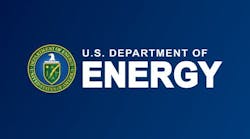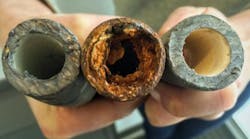PRESS RELEASE
WASHINGTON, November 30, 2023 – Today, the U.S. Environmental Protection Agency (EPA) announced a proposal to strengthen its Lead and Copper Rule that would require water systems across the country to replace lead service lines within 10 years. EPA is also proposing additional improvements to protect public health, such as lowering the lead action level and improving sampling protocols utilized by water systems. Today’s proposed action significantly advances President Biden’s commitment to remove every lead service line in America to protect children and vulnerable populations from the negative impacts of lead in drinking water, particularly those living in disadvantaged communities.
The Biden-Harris Administration is using every tool available to help communities and water systems Get the Lead Out—including investing a historic $15 billion through the Bipartisan Infrastructure Law to replace lead service lines, providing technical assistance to communities, and supporting the development of a national inventory of lead service lines. The Lead and Copper Rule Improvements are central to the whole of government approach detailed in the Administration’s Lead Pipe and Paint Action Plan.
“Lead in drinking water is a generational public health issue, and EPA’s proposal will accelerate progress towards President Biden’s goal of replacing every lead pipe across America once and for all,” said EPA Administrator Michael S. Regan. “With collaboration and the focused actions proposed today, EPA is delivering on our charge to protect all Americans, especially communities of color, that are disproportionately harmed by lead in drinking water systems.”
“EPA’s proposed Lead and Copper rule is grounded in the best available science and successful practices utilized by drinking water systems to protect children and adults from lead in drinking water,” said EPA Assistant Administrator for Water Radhika Fox. “Cities like Newark, NJ, Benton Harbor, MI, and Green Bay, WI have all successfully gotten the lead out of their water systems. Our proposed rule applies the lessons learned to scale these successes to every corner of the country,”
The science is clear: there is no safe level of lead exposure. In children, it can severely harm mental and physical development—slowing down learning and damaging the brain. In adults, lead can cause increased blood pressure, heart disease, decreased kidney function, and cancer.
The proposed Lead and Copper Rule Improvements are a major advancement in protecting children and adults from these significant, and irreversible, health effects from lead in drinking water. Key provisions in the proposal include:
- Achieving 100% Lead Pipe Replacement within 10 years.
- Locating legacy lead pipes.
- Improving tap sampling.
- Lowering the Lead Action Level.
- Strengthening protections to reduce exposure.
The proposal would also require water systems to communicate more frequently and proactively with consumers about lead service lines and the system’s plans for replacing the lines.
“President Biden and Vice President Harris believe that everyone should be able to turn on the tap and know that the glass of water they pour is safe to drink,” said White House Council on Environmental Quality Chair Brenda Mallory. “Today’s announcement from EPA represents a major advancement in protecting children and families from lead and builds on our actions across the government to help achieve President Biden and Vice President Harris’s vision of removing all lead pipes across the country.”
“President Biden and Vice President Harris believe that no family, no child, no American should have to worry about lead exposure – from the water they drink or air they breathe,” said Assistant to the President and White House National Climate Advisor Ali Zaidi. “That’s why the President and Vice President have made replacing every lead pipe in America a centerpiece of their agenda, mobilizing tens of billions of dollars of investment and putting the full throw-weight of the federal government behind this push. EPA’s latest action bolsters this historic effort and implements a key element of the Biden-Harris Lead Pipe and Paint Action Plan – more than 10 agencies stepping forward with dozens of bold actions to take on and tackle this public health crisis and this staggering source of environmental injustice.”
“Here in Newark, New Jersey, our community persevered through a lead crisis and I’m proud of the work we did removing all 23,000 lead pipes in the city in under three years,” said Kareem Adeem, Director of the Newark Department of Water and Sewer Utilities. “EPA’s new proposed rule will prompt more communities across the country to reduce exposure to lead in drinking water. This action is commendable and represents a positive step forward toward safeguarding the health and well-being of current and future generations.”
“A game changer for kids and communities, EPA's proposed new lead and copper rule would help ensure that we will never again see the preventable tragedy of a city, or a child, poisoned by their pipes,” said Mona Hanna-Attisha, Flint, Michigan pediatrician and Associate Dean for Public Health at Michigan State University College of Human Medicine. I am thrilled that this rule centers our children and their potential - and listens to parents and pediatricians who have been advocating for this for decades.”
Once the proposed rule is published in the Federal Register, EPA will accept comments for 60 days. The agency will also hold a virtual public hearing on January 16, 2024, at which time the public will be invited to provide EPA with verbal comments. For more information about the proposed rule, including a pre-publication version of the proposal, fact sheets, and directions for submitting comment and registering for the public hearing, visit the proposed rule webpage.
Background
EPA is taking a comprehensive approach to getting the lead out, including:
- Regulatory Framework. EPA’s proposed Lead and Copper Rule Improvements follow the science and EPA’s authority under the Safe Drinking Water Act to strengthen regulatory requirements to address lead in drinking water.
- Funding. The Bipartisan Infrastructure Law provides $50 billion to support upgrades to the nation’s drinking water and wastewater infrastructure. This includes $15 billion dedicated to lead service line replacement and $11.7 billion of general Drinking Water State Revolving Funds that can also be used for lead service line replacement. To date, EPA has awarded over $3.5 billion in funding for lead service line replacement across the country.
- Technical Assistance. EPA’s water technical assistance (WaterTA), including the recently launched Get the Lead Out Initiative which will partner with 200 underserved communities nationwide, helps communities identify lead services lines, develop replacement plans, and apply for funding to get the lead out.
- Practical Implementation Tools. Through training, tools, webinars, and case studies, EPA provides support to drinking water systems to reduce lead exposure.









